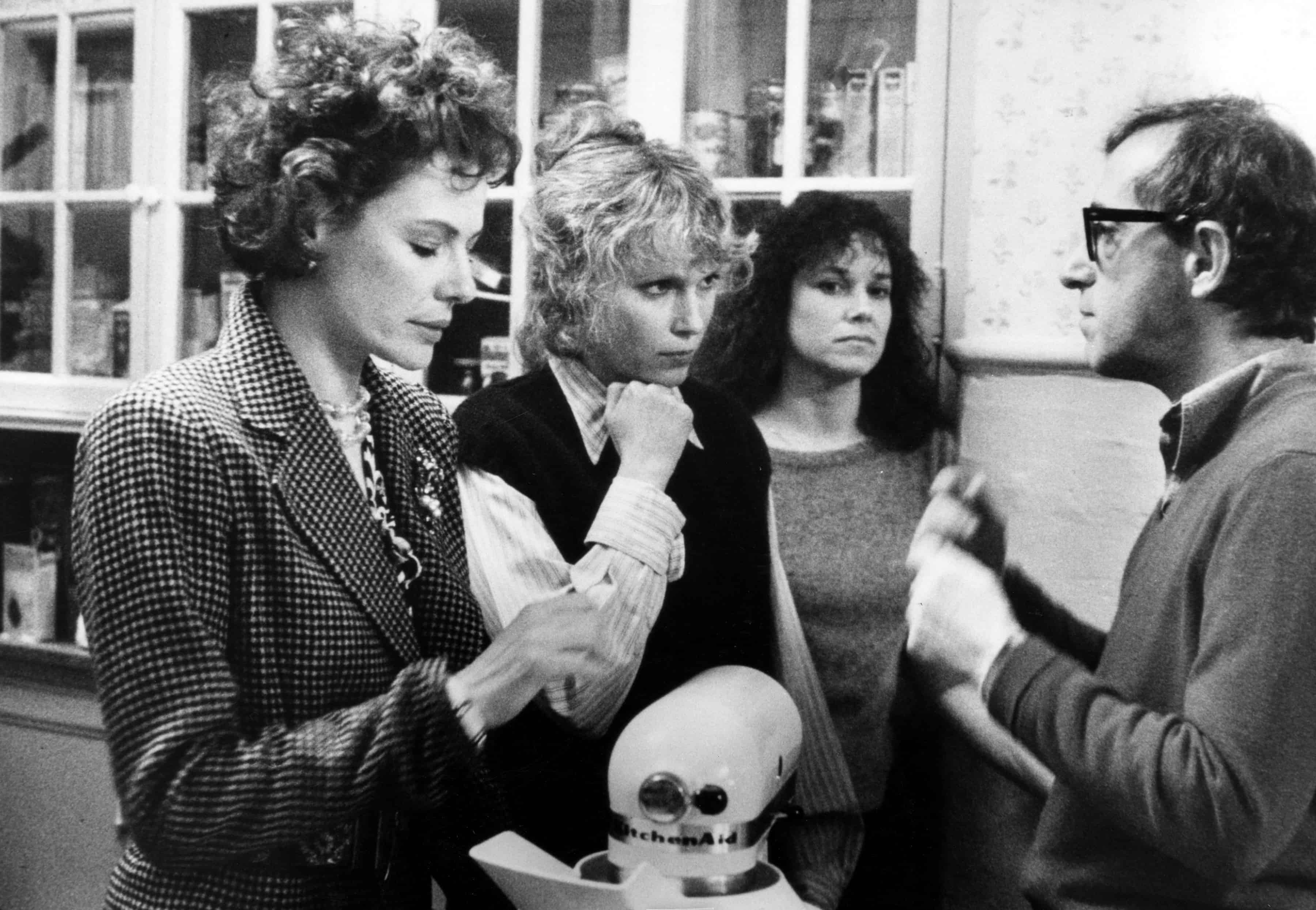Hannah and Her Sisters may be Woody Allen’s best film. It’s warm, funny, and decidedly poignant in both its themes and its execution. The film is celebrating its thirtieth anniversary, and in honor of that, it’s time to take a look back at it and its relationship with one of Allen’s favorite subjects: death.
Death is everywhere in Woody Allen’s films, if not overtly present through character deaths, then cleverly hidden in dialogue. Allen’s comedy is infused with a sense of mortality, one that makes his films darkly humorous. Hannah and Her Sisters is one of Allen’s more death-obsessed ventures though, at least partially because Allen plays a version of himself, a hypochondriac named Mickey who quickly becomes obsessed with his own mortality.
In doing so, Allen sheds many romantic aspects of his character in order to focus on the realization that his life is doomed to end, as is everyone else’s. This gives Mickey a sense of purposelessness, a sense that nothing he does is of consequence because none of it is really lasting. The horrible, terrifying truth is that he’s right. Mickey is forced to reckon with the knowledge that whatever he builds will one day disappear, and perhaps even worse, that he will disappear along with it.
Though Mickey is surely the character who most overtly deals with death, the film as a whole seems to loom around the subject. There’s Elliot, the unsatisfied husband who lusts after his wife’s sister, a man dissatisfied with his own satisfaction, one who feels terrified by the prospect of being settled. There’s a finality to married life, and Elliot is unhappy with the knowledge that he may never again have the chance to embrace the chaos that used to define his life.
The sisters of the film’s title are certainly central figures, but death seems to loom on the edges of their lives, through Mickey and Elliot, as well as through their parents, figures obsessed, in their own way, with death. These parents are a pair too insecure to deal with their own old age, a couple that exists to best one another and prove that they have not yet lost their vitality. There’s a reason that, in the three separate Thanksgivings which give the viewer a sense of time passing, the parents are seen telling stories from their wild youth: they have more life behind them than ahead of them, and neither one of them is ready to deal with that fact.
This sentiment, one of denial, is echoed by Mickey’s own parents, who don’t understand his fascination with his own demise. “I’ll be unconscious,” his father says, seemingly comforted by the fact that if he no longer exists, at least he won’t be aware of it. If the sisters’ parents are a couple who live in the past to avoid the future, then Mickey’s parents are two people who see no point in trying to control things that are ultimately uncontrollable anyway.
Mickey’s search for answers to the question of death takes him not only to his parents, but also to religious leaders and intellectuals. A Tolstoy quote appears on the screen-“The only absolute knowledge attainable by man is that life is meaningless.” For much of the movie Mickey seems to agree with this sentiment. He can’t find anyone who will give him definitive proof in the afterlife. What’s more, he feels that if the best that he can get is a maybe, then life is really not worth living.
In a crucial and somewhat climactic scene, Mickey describes his own suicide attempt, one that he botches because of his excessive perspiration. He then takes a walk and ultimately arrives at a movie theater. He gets wrapped up in the story of the film that’s playing, and begins to understand that even if life is a ride you only get to ride once, it’s still one that is worth taking. Mickey decides to be part of the experience instead of spending his time searching for answers he knows he’ll never find.
This may seem, for all intents and purposes, to be a resolution. It closes up the conflict that one of our major characters is facing, and if you turned off the movie after that, you wouldn’t walk away unsatisfied. Allen doesn’t stop, though. Instead, he allows Mickey to fall in love with Holly, one of Hannah’s sisters. In doing so, he creates a world where a man once obsessed with his own mortality becomes completely obsessed by a more positive emotion: love.
In this way, Allen decides to tangle up love and death, making the two inseparable. Hannah and Her Sisters makes the argument that falling in love is almost silly in a world where death looms over every decision we make. More importantly, though, it argues that it is worth it, because it is perhaps the most important positive aspect of being alive.
The final scene of Hannah and her Sisters sees Holly and Mickey at a family Thanksgiving, talking to one another in front of a mirror. Holly, who is now married to Mickey, reveals that she’s pregnant. Mickey, who thought himself sterile, is so over the moon about the prospect of becoming a father that he must simply embrace his wife. This is the image the film ends on, one that is not only removed from the idea of death, but is also preoccupied by it’s polar opposite – life. Life begets life, and none of it would be possible without love. That’s what Allen is most amazed by. We’re constantly faced with the prospect of death, but we ourselves create more life anyway. We live, we love, we lose, and we die. There’s a beauty in that, and Allen sees every part of it.


